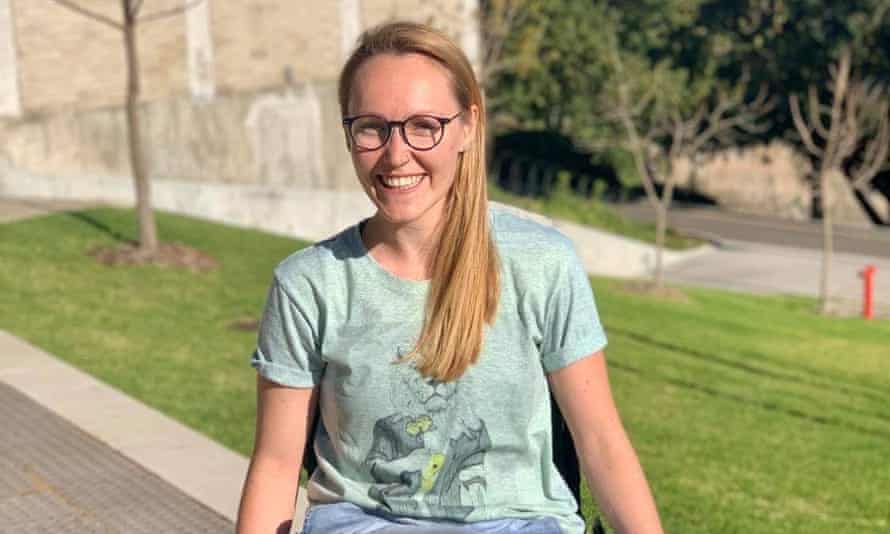Exclusive: government urged to address ‘intractable problems’ as tightened rules on disability pensions blamed for fueling increase

Last modified on Mon 22 Feb 2021 06.48 AEDT
The number of young people with disabilities in Australia surviving on below-the-poverty-line welfare benefits has “exploded” by more than 300% over the past decade, new data reveals.
As the Morrison government mulls an increase to unemployment benefits, Children and Young People with Disability Australia (Cyda) has seized on the new statistics to join welfare groups, Labor, the Greens, the business lobby, unions and the Reserve Bank in calling for a permanent boost to income support payments.
In a pre-budget submission, Cyda cited Department of Social Services data that reveals an enormous rise in the number of young people with a “partial capacity to work” receiving jobseeker or youth allowance payments.
Guardian Australia has reported extensively on the increase of sick or disabled welfare recipients, but the trend is often attributed to older jobseekers who experience health issues as they age.
However, the new data obtained by Cyda showed a 372.8% increase among jobseekers aged between 20 and 25 with a partial capacity to work, up from 5,308 in 2009 to 25,096 in 2020.
Between 2009 and 2020, youth allowance recipients under 19 with a partial capacity work rose by 174.9%, increasing from 2,299 in 2009 to 6,319 in 2020.
Meanwhile, the number of students aged 20 to 25 with a disability getting youth allowance skyrocketed 970.3%, increasing from only 936 in 2009 to 10,018 in 2020.
Mary Sayers, the Cyda chief executive, said the figures had “exploded” for a number of reasons, including that governments had tightened access to the disability support pension, which is paid at a higher rate.
“The other is the absolute entrenched disadvantage that young people face in the labour market,” she said. “So we’ve got a whole range of these really intractable problems that need attention.
“These are young people who have partial capacity to work as well. So it’s already recognised that they have some barriers to working full-time. So then to force them to live in poverty is an absolute crime.”
Anu Francis, 25, who lives with several physical and neurological conditions and sometimes uses a wheelchair, has been surviving on youth allowance during her studies at university.
“It’s pretty hard,” she said. “I’m still living at home just because with that money I literally can’t afford to move out.”
Francis, who is studying studying secondary and special education, said she had been knocked back for the disability support pension in what she said was not a “fair assessment”.
She studies full-time in order to keep her youth allowance payment, even though her doctor said that ideally she would do part-time hours, in part because of a taxing and costly regime of weekly medical appointments.
“It’s kind of a part-time job in itself,” she said.
Francis said she had also been told she would not be granted the disability pension unless she dropped to part-time studies.
“[This] is a huge loophole that a lot of people have,” she said. “You just have to take a leap of faith, enrol in part-time study, and you lose your youth allowance while you wait.
“And I know for me, it was over six months before I found out about the decision. That would have been six months with no youth allowance if I’d done it, it would have been six months with no payments, just to get rejected.”
The disability pension is currently $944.30 a fortnight, while people on jobseeker generally get $565 a fortnight, plus the $150 coronavirus supplement, which expires at the end of March.
Youth allowance is much less generous, and paid at between $253.20 and $462.50 for those without children, including the supplement.
In its pre-budget submission, Cyda called for a review of the social security system and changes to ensure young people with disability are not living in poverty.
This included an increase to welfare payments and a review and amendments to the disability pension eligibility requirements.
Sayers said the problem was even more urgent due to the Covid-induced recession, which meant young people with disabilities faced even more competition for fewer jobs.
No comments:
Post a Comment